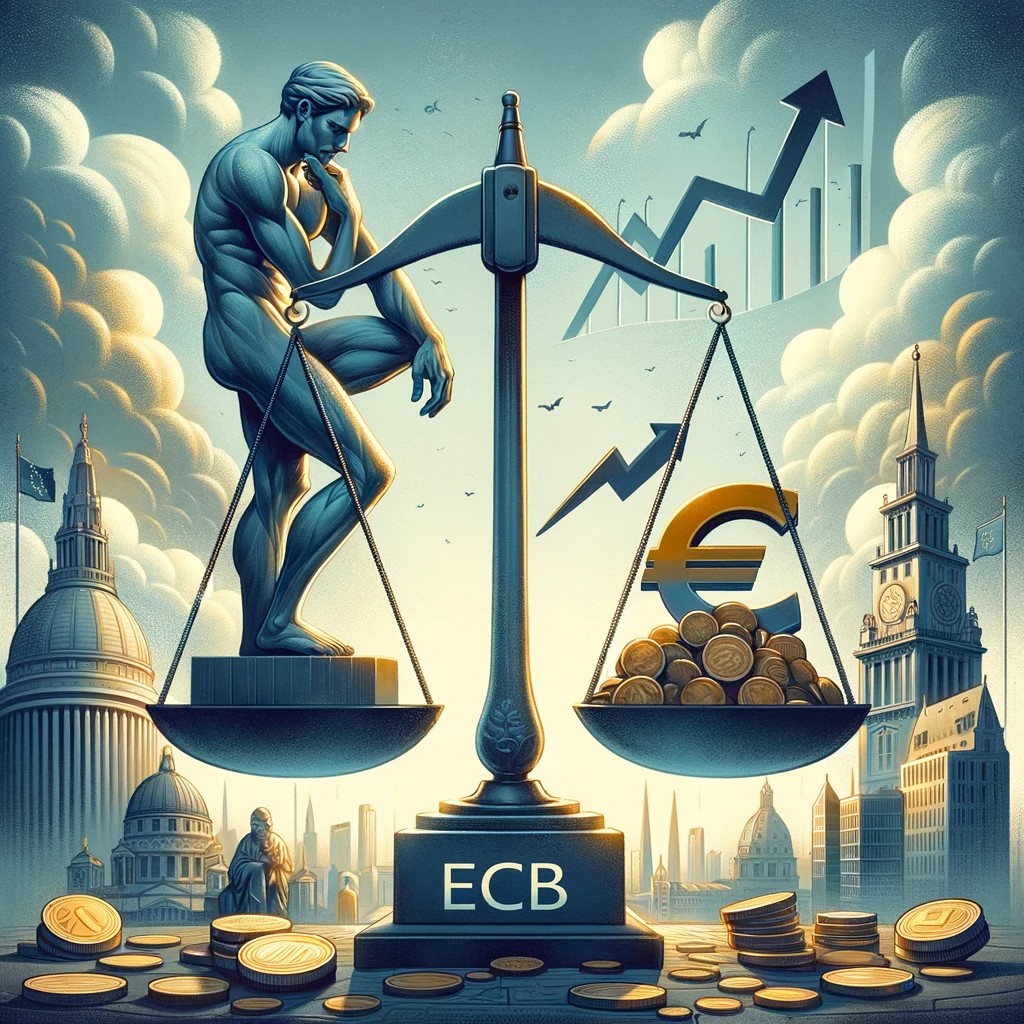The European Central Bank (ECB) seems to be in a tight spot. With its latest meeting in Frankfurt, the spotlight is on the ECB’s strategy regarding interest rate cuts. Market expectations and the ECB’s stance appear to be on a collision course, sparking a debate over the central bank’s roadmap. While investors are betting on a rate cut as soon as April, the ECB’s inner circle, including President Christine Lagarde, suggests a more cautious approach, hinting at the possibility of cuts only by summer.
The ECB’s Tightrope Walk
Navigating through the economic intricacies, the ECB faces a complex puzzle. The bond markets, though adjusting their expectations slightly, still anticipate a substantial easing in monetary policy this year. Marco Valli, a UniCredit economist, underscores Lagarde’s firm stance against early rate cuts unless an unforeseen disinflationary event occurs. However, the situation is far from straightforward. Factors such as the persistent cost of shipping disruptions, robust wage growth, and relaxed financial conditions hint at stickier inflation, while falling gas prices and the economic slowdown, especially in Germany, suggest otherwise.
Katharine Neiss of PGIM Fixed Income raises concerns about potential over-tightening by the ECB in 2023, considering the recent economic downturn. This mixed economic canvas puts the ECB in a dilemma: acknowledge inflation progress without declaring victory, a sentiment echoed by BNP Paribas analysts.
Global Economic Checkpoints
Broadening the lens, the global economic scene adds more layers to this narrative. The US economy, for instance, exhibits a contrasting picture. Slowed by high interest rates, it’s expected to have grown at a modest pace in the fourth quarter. The Federal Reserve’s preferred inflation measure, the core PCE deflator, anticipated to have risen 3% year-over-year, signals a slowdown in inflation – a much-needed relief for the Fed.
Meanwhile, the Bank of Japan (BoJ) treads its path, maintaining interest rates below zero amid mixed signals on inflation and wages. Despite a gradual inflation slowdown, analysts, like Stefan Angrick of Moody’s Analytics, predict a cautious approach from the BoJ, especially post the New Year’s Day earthquake.
Back in Europe, the ECB, after a series of aggressive rate hikes, has reached its highest interest levels in over two decades, successfully reining in the inflation surge post-Ukraine invasion. However, this victory over inflation has its trade-offs, with the Eurozone’s growth nearly stalling in 2023. This brings us back to the burning question: when will the ECB ease its monetary stance?
Market anticipation for a rate cut was initially high, with expectations of a March timeline. Yet, the ECB’s governing members, including Lagarde and Joachim Nagel of the Bundesbank, have been reluctant to commit, emphasizing a data-driven approach. This cautious sentiment is echoed by François Villeroy de Galhau of the French central bank, stressing the prematurity of discussing rate cuts.
In the upcoming ECB meeting, policymakers are tasked with balancing optimism on inflation progress with the looming uncertainty. Jack Allen-Reynolds of Capital Economics expects a repetition of the December narrative, cautioning that inflation remains a concern.
In sum, the ECB finds itself walking a tightrope between market expectations and economic realities. While it grapples with the timing and necessity of interest rate cuts, the global economic landscape offers no clear answers. As markets and policymakers engage in this intricate dance, one can only watch with bated breath, wondering if there’s indeed a master plan behind the ECB’s cautious moves or if it’s merely an economic improvisation. In this high-stakes economic theatre, the only certainty is uncertainty.





